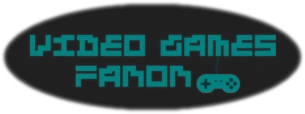| Super Hikari World | |
 | |
| Developer(s) | Azumanga Interactive |
| Publisher(s) | Bandai Namco Games |
| Platform(s) | Bandai Revolution Bandai PocketTurbo Plus |
| Genre | Platform |
| Mode(s) | 2 Players |
| Ratings | E for Everyone |
Super Hikari World is a platform game and the fourth of the Super Hikari game series developed by Azumanga Interactive and published by Bandai Namco Games for the Bandai Revolution and Bandai PocketTurbo Plus.
The game is a hack of the 1990/1991 Super Nintendo game Super Mario World.
Gameplay[]
Super Hikari World is a two-dimensional platform game in which the player controls the on-screen protagonist (either Hikari or Takeru) from a third-person perspective. The game shares similar gameplay mechanics with previous titles in the series—Super Hikari, Super Hikari 2, and Super Hikari 3—but introduces several new elements. In addition to the running and jumping moves found in past games, the player can float with the aid of special items and execute new types of jumps such as the spin jump.
The player navigates through the game via two game screens: an overworld map and a sidescrolling playfield. The overworld map displays an overhead representation of the current world and has several paths leading from the world's entrance to a castle. Paths connect to action panels, fortresses, ghost houses and other map icons, and allow players to take different routes to reach the world's goal. Moving the on-screen character to an action panel or fortress will allow access to that level's playfield. The majority of the game takes place in these levels, populated with obstacles and enemies, with the player traversing the stage by running, jumping, and dodging or defeating enemies. Each world features a final stage with a boss to defeat; each of the seven worlds feature fortresses controlled by one of the Werelings, and the player also battles King Werewolfmon in his castle in the seventh world. In addition to special items from previous games like the "Super Plums" and "Fire Pepper", new power-ups are introduced that provide the player with new gameplay options.
The new suit in the game is the cape feather, which gives Hikari a cape and allows her to fly. This suit is also similar to the Tail Suit from Super Hikari 3 in terms of gameplay mechanics but with a few alterations: you can now hold the B button to fly when Hikari is able to do so, and can glide using the cape as a sail. As in Super Hikari 3, Hikari can only fly for a limited amount of time, but with the cape can glide indefinitely.
The powerups from Super Hikari 3 did not return: Super Tail, Fox Suit, Fish Suit, and Hammer Suit. Super Hikari World includes a multiplayer option which allows two players to cooperatively play the game by taking turns at navigating the overworld map and accessing stage levels; the first player controls Hikari, while the other controls Takeru. The game introduces Agumon, a digimon dinosaur companion whom Hikari can ride and who is able to eat most enemies.
Although Hikari and Takeru must generally navigate through seven worlds to reach the end of the game, the player can beat the game much faster by using the Star Road routes. In addition, there are a number of levels that have hidden exits, and as a result there exist several ways for Hikari to navigate to King Werewolfmon's castle. Furthermore, the exploration of these secret stages lead to stages which while not necessary to the main plot, provide the gamer with more playing experience, such as Special World. Completion of Special World permanently alters some sprites and the overworld map's colour scheme.




